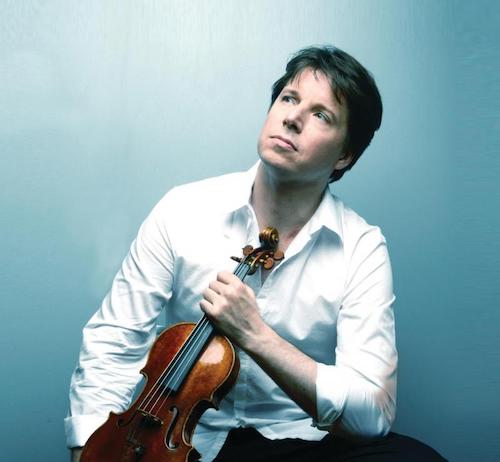Valčuha and Bell bring power and glow to Shostakovich, Sibelius

Dmitri Shostakovich’s Symphony No. 5 boasts one of the orchestral repertoire’s most arresting openings, but it was stymied on Friday.
As the Houston Symphony dug into those slashing phrases, concertgoers straggling back from intermission clattered to their seats. Then a Jones Hall usher wrestled a couple of elderly guests’ walkers down the aisle, loudly bumping one into something on the way.
Conductor Juraj Valčuha, leading his second program as the orchestra’s music director, looked around toward the noise, but he didn’t stop and restart—as he might well have done.
It was up to Valčuha and company to retake the initiative, and they did. The orchestra’s eager attacks and lean, gleaming sound set loose the music’s electricity, all but making up for what was lost in the thwarted opening. As the epic work unfolded, its ferocity came through with crackling intensity—and the orchestra equaled that with the quiet power it gave Shostakovich’s laments and introspections.
In the opening movement, as the violins first played the broad, hushed theme that floats atop pulsating chords, their sleekness and limpid sound managed to evoke both stillness and yearning. But when the music cried out, Valčuha prodded the players to lean on its most forceful turns of phrase.
As the movement’s middle section brought back violence, the orchestra’s bite and power gave it visceral force. In the unison outburst that delivers the movement’s climax, the orchestra lashed out with such muscle and sonorousness that it seemed to be practically flinging the music at the audience.
But when the winds—especially principal flutist Aralee Dorough, principal clarinetist Mark Nuccio and principal horn William VerMeulen—stepped forth in the return of that violin theme, they briefly introduced a warmer, more human tone.
The cellos and basses instantly wiped that away with the second movement’s rowdy beginning—bearing down so forcefully that their bows at first made a crunch against the strings. Valčuha prodded the rest of the orchestra to bring Shostakovich’s sarcasm the same edge, from the winds’ snarls to the plucked strings’ bite.
In the Largo’s first phrases, employing just a portion of the string section, the group’s quiet firmness showed than a relative few players can make an impact beyond their numbers. As the rest of the strings joined in, Valčuha led them to make the music swell, exuding fervor—the first of several potent crescendos that made Shostakovich’s meditations as electrifying in their way as other movements’ explosions. Introducing the plaintive, voice-in-the-wilderness solo theme, principal oboist Jonathan Fischer began delicately, then grew even more so, making the melody all the more fragile and poignant.
The orchestra again obliterated stillness with the finale’s opening salvo. Shostakovich and Valčuha unleashed the orchestra’s driving energy and snarling power as nothing to this point had, and the brasses’ grinding weight took that to is peak. The symphony’s implacable finish came across as arrestingly as its beginning should have.
It wasn’t as though Jean Sibelius’ Violin Concerto, which came before intermission, called for anything like the wallop that Shostakovich’s Fifth did. But Valčuha and the orchestra set loose some sonic groundswells there, too.
The group not only punctuated Joshua Bell’s red-blooded, even explosive playing of the solo part, it complemented the glow he brought the slow movement.
Bell gave gleam and spontaneity into the ethereal beginning, but he soon threw himself into the first movement’s mercurial shifts, changing in moments from lyrical expansiveness to virtuoso abandon. His most forceful strokes had a punch and robustness that would have suited Shostakovich.
But Bell savored the slow movement’s expansiveness and glow, and he swept through the finale’s pyrotechnics with bravura and galloping energy galore. While he didn’t play an encore, he did sign autographs at intermission—perhaps marking another step toward normalcy post-pandemic.
The concert opened with the world premiere of Nico Muhly’s Bright Idea, commissioned by the orchestra to mark Valčuha’s advent.
In his program note, Muhly explains that he salutes the occasion in the start of the piece by beginning with the player next to Valčuha: concertmaster Yoonshin Song. She first plays a spirited solo akin to a jig—not that its meter is that regular—and the action gradually spreads through the orchestra, which adds all manner of glittering action of its own.
As the 11-minute scherzo progresses, speed and sparkle remain ever-present—if only in the background at times—but other colors and textures come into play, from weighty chords swapped among the orchestra’s lowest sections to chattering for the brasses to a bounding interjection from the timpani.
On Friday, concertmaster Song opened the piece jauntily, and the rest of the orchestra produced an ever-changing bustle of energy. The orchestra was so busy that it might be impossible for anyone other than Muhly and Valčuha to know if everything was in place. But the sum total was a joyful noise.
The Houston Symphony repeats the program 8 p.m. Saturday and 2:30 p.m. Sunday at Jones Hall. houstonsymphony.org


